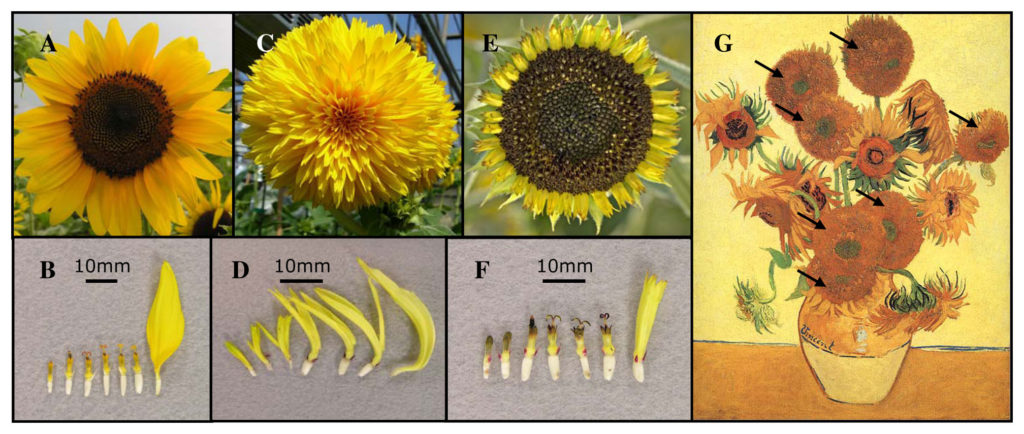Athens, Ga. – University of Georgia researchers are part of an international team that has published the first sunflower genome sequence. This new resource will assist future research programs using genetic tools to improve crop resilience and oil production.
They published their findings today in the journal Nature.
Known for its beauty and also as an important source of food, the sunflower is a global oil crop that shows promise for climate change adaptation because it can maintain stable yields across a wide variety of environmental conditions, including drought. However, assembling the sunflower genome has until recently been difficult, because it mostly consists of highly similar, related sequences.
The research team in North America and Europe sequenced the genome of the domesticated sunflower Helianthus annuus L. They also performed comparative and genome-wide analyses, which provide insights into the evolutionary history of Asterids, a subgroup of flowering plants that includes potatoes, tomatoes and coffee.
They identified new candidate genes and reconstructed genetic networks that control flowering time and oil metabolism, two major sunflower breeding traits, and found that the flowering time networks have been shaped by the past duplication of the entire genome. Their findings suggest that ancient copies of genes can retain their functionality and still influence traits of interest after tens of millions of years.
“As the first reference sequence of the sunflower genome, it’s quite the accomplishment,” said paper co-author John M. Burke, professor of plant biology and member of the UGA Plant Center. “The sunflower genome is over 40 percent larger than the maize [corn] genome, and roughly 20 percent larger than the human genome, and its highly repetitive nature made it a unique challenge for assembly.”
Burke, whose lab studies the genomic basis of evolutionary divergence within the sunflower family, was involved in the genetic mapping upon which the genome assembly was based and oversaw the whole genome re-sequencing of the 80 sunflower lines described in the paper.
The international collaboration was led by Nicolas Langlade at the French National Institute for Agricultural Research in Toulouse, France, and included Loren Rieseberg of the University of British Columbia.
“Like many plant genomes, the sunflower genome is highly repetitive, though in this case the situation is a bit worse,” Burke said. “The repetitive elements within the genome arose relatively recently, meaning that they haven’t had time to differentiate. It’s therefore like putting together a massive puzzle wherein many pieces look exactly the same, or nearly so.”
The authors concluded that this research reinforces the sunflower as a model for ecological and evolutionary studies and climate change adaptation, and will accelerate breeding programs.
“It will greatly facilitate our work to understand the molecular mechanisms underlying key traits related to abiotic stress resistance-things like drought, salinity and low nutrient resistance,” Burke said. “This genome sequence will essentially serve as a genetic road map to pinpoint the genes underlying these sorts of traits.”
An online version of the full study, “The sunflower genome provides insights into oil metabolism, flowering and Asterid evolution,” is available at http://www.nature.com/nature/journal/vaop/ncurrent/full/nature22380.html
